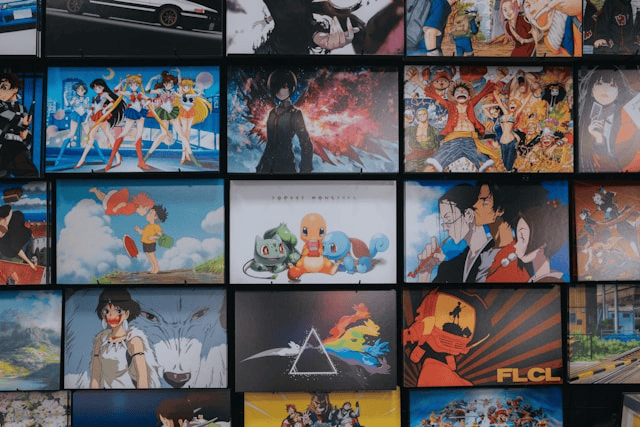Over the past few decades, anime has become far more than just an entertainment export from Japan—it has evolved into a cultural phenomenon with a deep and lasting impact across the globe. Nowhere is this more evident than in the West, where anime has not only grown in popularity but has also left a significant mark on media, fashion, art, education, and internet culture.
This article explores the influence of anime in Western culture, tracing its journey from early imports to mainstream success, and analyzing how it continues to shape creative and cultural landscapes across the Western world.
Early Introduction to the West
The presence of anime in Western media can be traced back to the 1960s, with titles like Astro Boy and Speed Racer becoming some of the first Japanese animated shows to air on American television. At the time, these shows were often heavily localized, with altered character names and censored content to fit Western broadcasting standards.
Initially perceived as simple cartoons for children, these early anime imports laid the groundwork for future interest. While the influence of anime in the West was modest during this period, it planted the seeds of fascination for a generation of viewers.
Mainstream Popularity in the 1990s and 2000s
The 1990s and early 2000s marked a turning point in the history of anime in America and other Western nations. This era saw the rise of globally recognized franchises like Dragon Ball Z, Sailor Moon, Pokémon, and Naruto. These series captivated young audiences with their complex storylines, stylized visuals, and emotionally charged themes elements that set them apart from many Western cartoons.
The launch of dedicated programming blocks like Toonami and the availability of anime on cable TV networks introduced a wider audience to the genre. These shows were often accompanied by merchandise, video games, and trading cards, helping cement anime’s place in youth culture.
Streaming platforms such as Crunchyroll, Netflix, and Funimation later removed access barriers by offering large libraries of anime with subtitles and dubs, making it easier than ever for Western fans to discover and binge-watch series. This further accelerated anime’s reach and established it as a staple in Western entertainment.
Cultural Influence and Adaptation
As anime continued to grow in popularity, its stylistic and thematic elements began to influence Western creators across various forms of media. One of the most notable examples is Avatar: The Last Airbender, a Western animated series heavily inspired by anime aesthetics and storytelling techniques. Likewise, blockbuster films like The Matrix drew visual and conceptual inspiration from anime classics like Ghost in the Shell.
Anime’s unique visual language expressive characters, dynamic action sequences, and detailed world-building—has also made its way into Western animation, comic books, and even fashion. Cosplay culture, once considered niche, is now a widespread hobby supported by conventions, social media, and major brands.
Western fashion labels and streetwear designers have also adopted anime themes and characters into their collections. Collaborations between Japanese studios and Western brands continue to bridge cultural and commercial boundaries.
Anime and Internet Culture
The rise of internet culture has played a pivotal role in the growth of anime in Western culture. Online forums, fan sites, and social media platforms have provided fans with spaces to discuss, share, and celebrate anime content. Platforms like Reddit, Tumblr, and TikTok have been instrumental in spreading anime memes, clips, edits, and fan theories to broader audiences.
Fan art, AMVs (anime music videos), and fan fiction communities have also flourished online, showcasing the deep creative influence anime holds over its fanbase. Memes from shows like One Punch Man or JoJo’s Bizarre Adventure regularly trend across the internet, blurring the lines between niche fandom and mainstream humor.
This digital ecosystem has not only nurtured dedicated fandoms but has also helped normalize anime as a central part of online culture.
Academic and Educational Impact
Beyond entertainment, anime is increasingly being studied in academic settings as a tool for cultural exchange and critical analysis. Colleges and universities across the West now offer courses on Japanese animation, exploring themes such as identity, gender, technology, and war through the lens of anime.
Language programs often incorporate anime to help students learn Japanese, and many educators use popular series to introduce aspects of Japanese culture, history, and social dynamics. The influence of anime in Western culture extends into education, encouraging cross-cultural understanding and appreciation.
Modern-Day Integration and Globalization
Today, anime is more global than ever. International co-productions are on the rise, with Western studios collaborating directly with Japanese creators. For example, Netflix has invested heavily in original anime productions, blending Western storytelling preferences with traditional anime styles.
Major anime films, such as Demon Slayer: Mugen Train and Suzume, have seen significant box office success in the U.S. and Europe, further proving anime’s mainstream appeal. Licensing deals, merchandise, and streaming rights have transformed anime into a multi-billion-dollar global industry.
What was once a niche interest has now become a dominant force in global pop culture.
Criticisms and Cultural Appropriation Debate
As anime continues to permeate Western culture, discussions about cultural appropriation versus appreciation have become more frequent. Some critics argue that the West occasionally misinterprets or dilutes the cultural context of anime for commercial gain. Others stress the importance of understanding and respecting the traditions, values, and symbolism embedded in Japanese media.
Navigating this balance is critical to ensuring that the global embrace of anime fosters mutual respect and cultural learning rather than exploitation.
Conclusion
The influence of anime in Western culture is undeniable. From early imports and dubbed television shows to global cinematic success and academic study, anime has embedded itself into the fabric of Western life. It has redefined how stories are told, how characters are drawn, and how fans engage with media across the internet.

